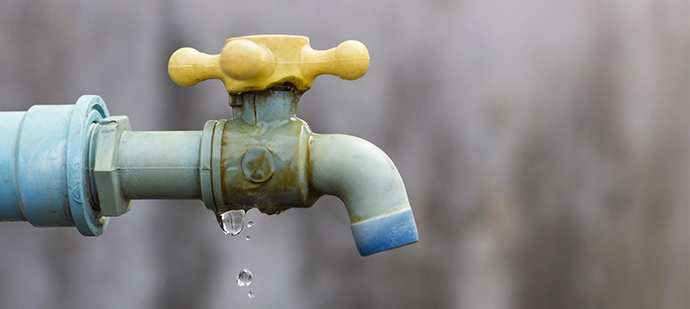Guide To Water Leak Detection At Home
Guide To Water Leak Detection At Home
Blog Article
Just about everyone may have their personal assumption about Finding hidden leaks.

Early discovery of leaking water lines can mitigate a prospective disaster. Some small water leakages might not be noticeable.
1. Examine the Water Meter
Every residence has a water meter. Examining it is a surefire way that assists you find leakages. For beginners, shut off all the water resources. Guarantee no person will certainly flush, make use of the faucet, shower, run the washing maker or dishwashing machine. From there, most likely to the meter and watch if it will certainly transform. Considering that no one is utilizing it, there need to be no movements. That suggests a fast-moving leak if it moves. Similarly, if you find no changes, wait a hr or more and examine back once again. This implies you may have a slow-moving leakage that can also be underground.
2. Inspect Water Consumption
If you identify abrupt changes, regardless of your consumption being the exact same, it suggests that you have leakages in your plumbing system. An unexpected spike in your costs shows a fast-moving leak.
A stable rise every month, even with the very same routines, shows you have a sluggish leakage that's likewise slowly rising. Call a plumber to completely inspect your residential or commercial property, particularly if you really feel a warm area on your flooring with piping underneath.
3. Do a Food Coloring Examination
30% comes from toilets when it comes to water consumption. Examination to see if they are running appropriately. Drop specks of food color in the storage tank as well as wait 10 mins. There's a leakage in between the container and also dish if the shade somehow infiltrates your dish during that time without flushing.
4. Asses Exterior Lines
Don't fail to remember to examine your exterior water lines also. Ought to water permeate out of the connection, you have a loose rubber gasket. One tiny leakage can squander heaps of water and also surge your water expense.
5. Inspect as well as Evaluate the Situation
Property owners must make it a habit to examine under the sink counters as well as also inside closets for any kind of bad odor or mold development. These 2 red flags show a leakage so prompt interest is needed. Doing regular inspections, also bi-annually, can save you from a significant issue.
Inspect for stainings as well as compromising as a lot of devices as well as pipelines have a life expectancy. If you presume dripping water lines in your plumbing system, don't wait for it to rise.
Early detection of dripping water lines can reduce a potential catastrophe. Some little water leakages may not be visible. Checking it is a surefire way that helps you find leakages. One small leakage can waste heaps of water and also spike your water expense.
If you think leaking water lines in your plumbing system, do not wait for it to intensify.
WARNING SIGNS OF WATER LEAKAGE BEHIND THE WALL
PERSISTENT MUSTY ODORS
As water slowly drips from a leaky pipe inside the wall, flooring and sheetrock stay damp and develop an odor similar to wet cardboard. It generates a musty smell that can help you find hidden leaks.
MOLD IN UNUSUAL AREAS
Mold usually grows in wet areas like kitchens, baths and laundry rooms. If you spot the stuff on walls or baseboards in other rooms of the house, it’s a good indicator of undetected water leaks.
STAINS THAT GROW
When mold thrives around a leaky pipe, it sometimes takes hold on the inside surface of the affected wall. A growing stain on otherwise clean sheetrock is often your sign of a hidden plumbing problem.
PEELING OR BUBBLING WALLPAPER / PAINT
This clue is easy to miss in rooms that don’t get much use. When you see wallpaper separating along seams or paint bubbling or flaking off the wall, blame sheetrock that stays wet because of an undetected leak.
BUCKLED CEILINGS AND STAINED FLOORS
If ceilings or floors in bathrooms, kitchens or laundry areas develop structural problems, don’t rule out constant damp inside the walls. Wet sheetrock can affect adjacent framing, flooring and ceilings.
https://www.servicemasterbyzaba.com/blog/how-to-detect-water-leakage-in-walls/

I'm certainly very interested by Leaking water lines and I really hope you enjoyed the new article. Do you know about somebody else who is involved in the subject? Do not hesitate to share it. We value reading our article about Finding hidden leaks.
Report this page